Oil is blowing towards the Breton National Wildlife Refuge at peak migration and nesting season when 25 million birds a day are crossing the Gulf. The Breton refuge is home of the brown pelican, a highly endangered species. Thousands of shorebirds are nesting now in the Breton refuge. The Fish and Wildlife service is rapidly responding, setting up booms to keep the oil out of the refuge. However, strong winds and storm surf will challenge the responders.
The brown pelican was making a strong recovery from Huricane Katrina's devastation.

Brown Pelican by Bill Stripling, courtesy of the National Audubon Society
Over four hundred shore dwelling species are threatened by the oil spill.
But it's not really a spill. It's a river of oil that could flow for months.
This isn't a spill," said Kerry St. Pe, who headed Louisiana's oil spill response team for 23 years. "This isn't a storage tank or a ship with a finite amount of oil that has boundaries. This is much, much worse."
It's a river of oil flowing from the bottom of the Gulf at the rate of 210,000 gallons a day that officials say could be running for two months or more. If that prediction holds, much of the state's southeastern coast will become a world-watched environmental battleground that hasn't been seen in the United States since the Exxon Valdez ran aground in Alaska 21 years ago.
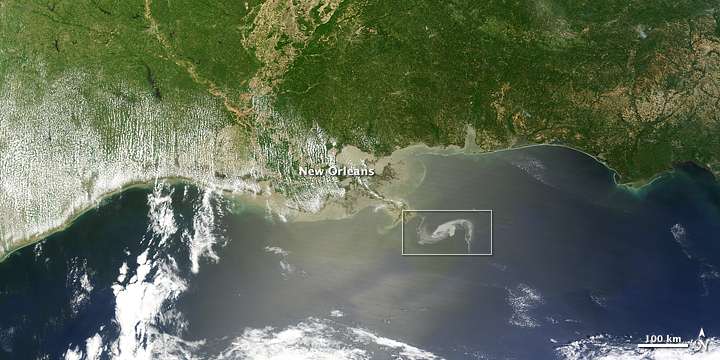 NASA acquired April 29, 2010
NASA acquired April 29, 2010
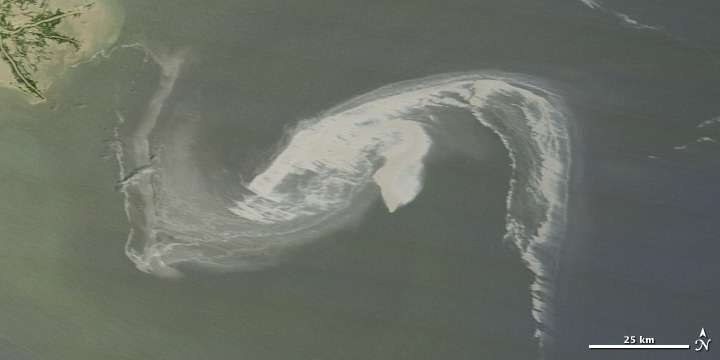 NASA acquired April 29, 2010
NASA acquired April 29, 2010
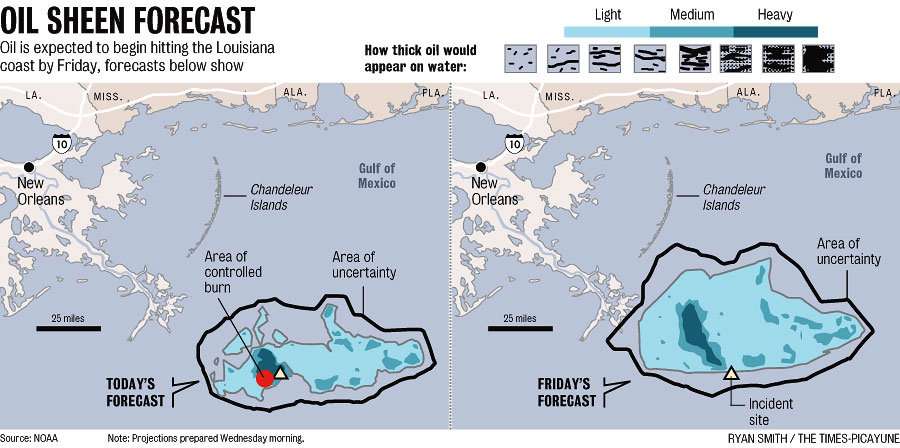
Updated

"When you stop and begin considering everything that this could impact, it really is stunning," said Karen Foote, biologist administrator with the Louisiana Department of Wildlife and Fisheries.
 Roseate Spoonbill by Bill Stripling, courtesy of the National Audubon Society
Roseate Spoonbill by Bill Stripling, courtesy of the National Audubon Society
Important bird areas clickable google map.
The area under threat produces the largest total seafood landings in the lower 48 states, is a vital wintering or resting spot for more than 70 percent of the nation's waterfowl, is used by all 110 neo-tropical migratory songbirds, and produces 50 percent of the nation's wild shrimp crop, 35 percent of its blue claw crabs and 40 percent of its oysters. Ressearchers say 90 percent of all the marine species in the Gulf of Mexico depend on coastal estuaries at some point in their lives, and most of those estuaries are in Louisiana -- endangered by an oil spill that could last months.
"This is a really important time for so many species in this ecosystem, because they're just begun spawning and nesting," said Melanie Driscoll, a Audubon Society staffer who is director of bird conservation for the Louisiana Coastal Initiative.
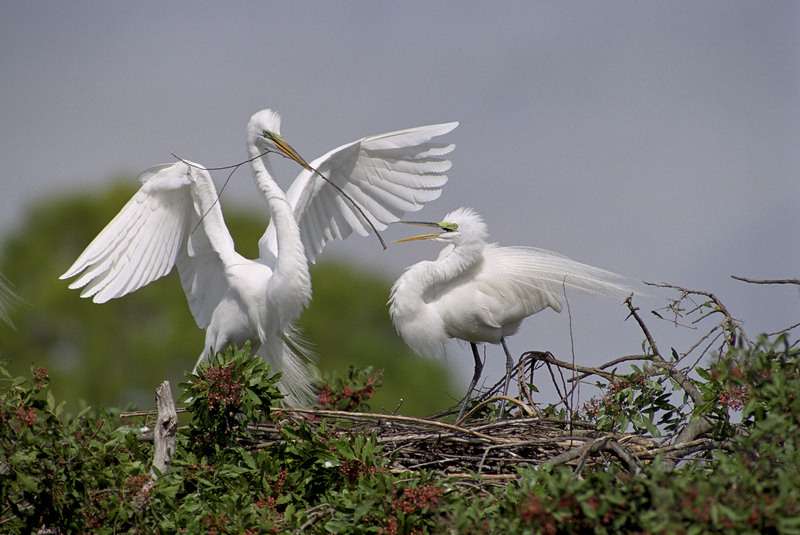 Great Egrets Nesting by Bill Stripling, courtesy of the National Audubon Society
Great Egrets Nesting by Bill Stripling, courtesy of the National Audubon Society
The Chandeleur Islands, which were devastated by hurricane Katrina, may be the first landfall of the oil as early as tomorrow, April 30. Channelization of the Mississippi River has stripped these barrier islands of sediment, leaving them vulnerable to storms and waves. However, they are still vital bird habitat. 20 miles per hour southeasterly winds are rapidly blowing the oil slick towards the islands.
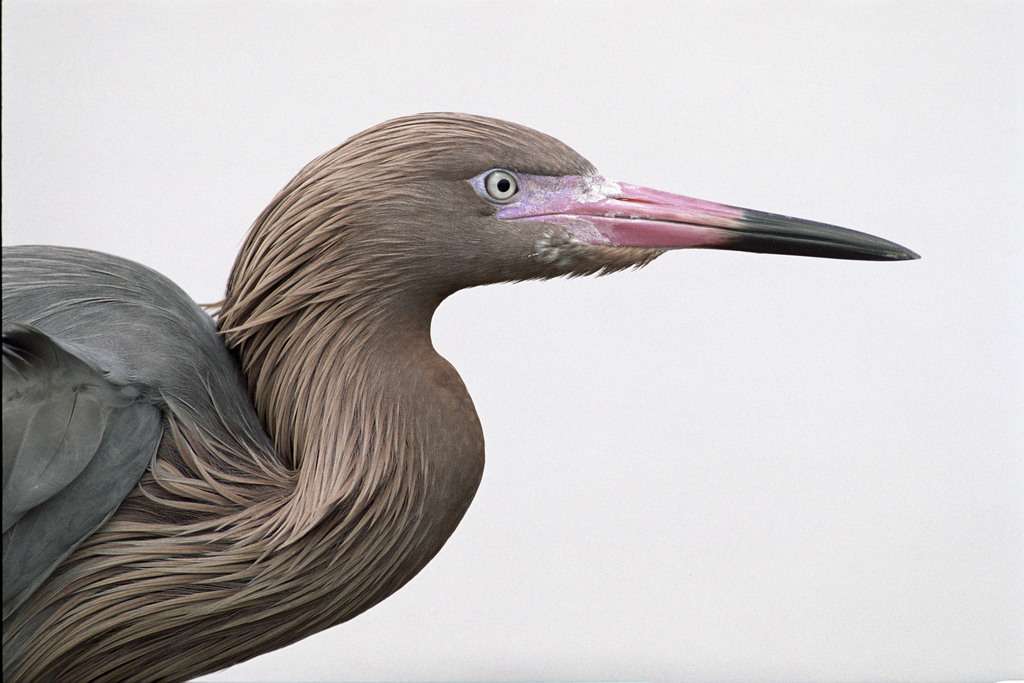 Reddish Egret by Bill Stripling, courtesy of the National Audubon Society
Reddish Egret by Bill Stripling, courtesy of the National Audubon Society
Fisherman are concerned about their livelihoods. Approximately 200 fisherman have volunteered to assist the fish and wildlife service with placing booms to try to keep the oil offshore.
As the encroachment of oil into coastal zones appears imminent, primary concerns include potential impacts to 20 coastal national wildlife refuges within the possible trajectory of the spill. In addition, this is the avian nesting season, sea turtle nesting season is approaching, Gulf sturgeon are congregating in coastal waters for upstream migration, and manatees are migrating back into summer areas more widespread than winter gathering spots in warm springs areas; all of these resources could be affected by the spill.
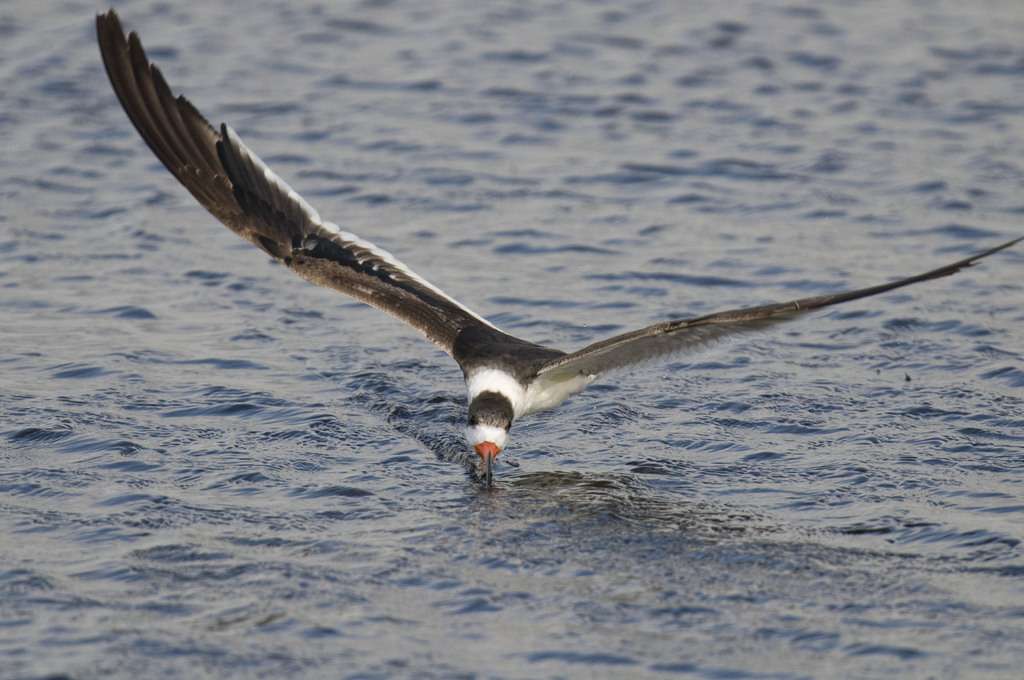 Black Skimmer by Bill Stripling, courtesy of the National Audubon Society
Black Skimmer by Bill Stripling, courtesy of the National Audubon Society
The Fish and Wildlife Service has set up an 800 number to call to report wildlife affected by the spill (866)557-1401.
Potential threats to bird life along the Gulf Coast
The greatest threat to bird life is to species which nest along the barrier islands, beaches and shorelines along the Gulf Coast. Species at risk include sandwich tern, royal tern, least tern, Forster's tern, caspian tern, brown pelican and black skimmer. Birds are most susceptible to being oiled while foraging for fish and other food items in the open Gulf waters or near nesting sites. Nesting sites/colonies could also be at risk if storm tides push oiled water over barrier islands or beaches where those birds typically nest.
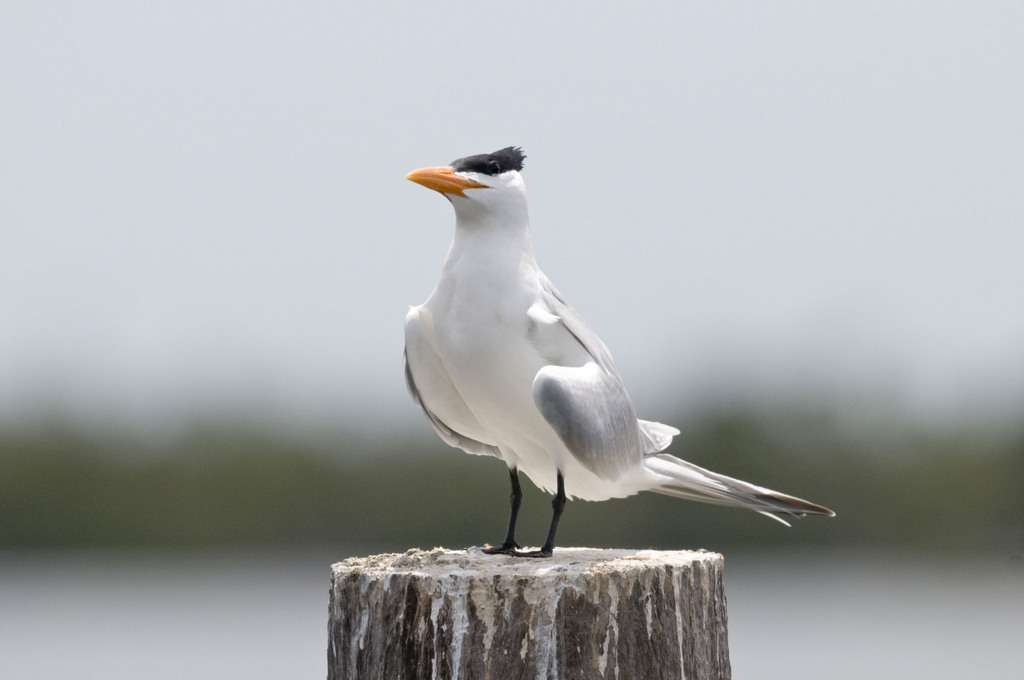 Royal Tern by Bill Stripling, courtesy of the National Audubon Society
Royal Tern by Bill Stripling, courtesy of the National Audubon Society
Several species of birds found in interior marsh areas could also be affected if oiled water moves farther inland. Species at risk include great blue heron, great egret, snowy egret, mottled duck, clapper rail, king rail and common moorhen. Those species would also be at greatest risk while foraging in oiled water.
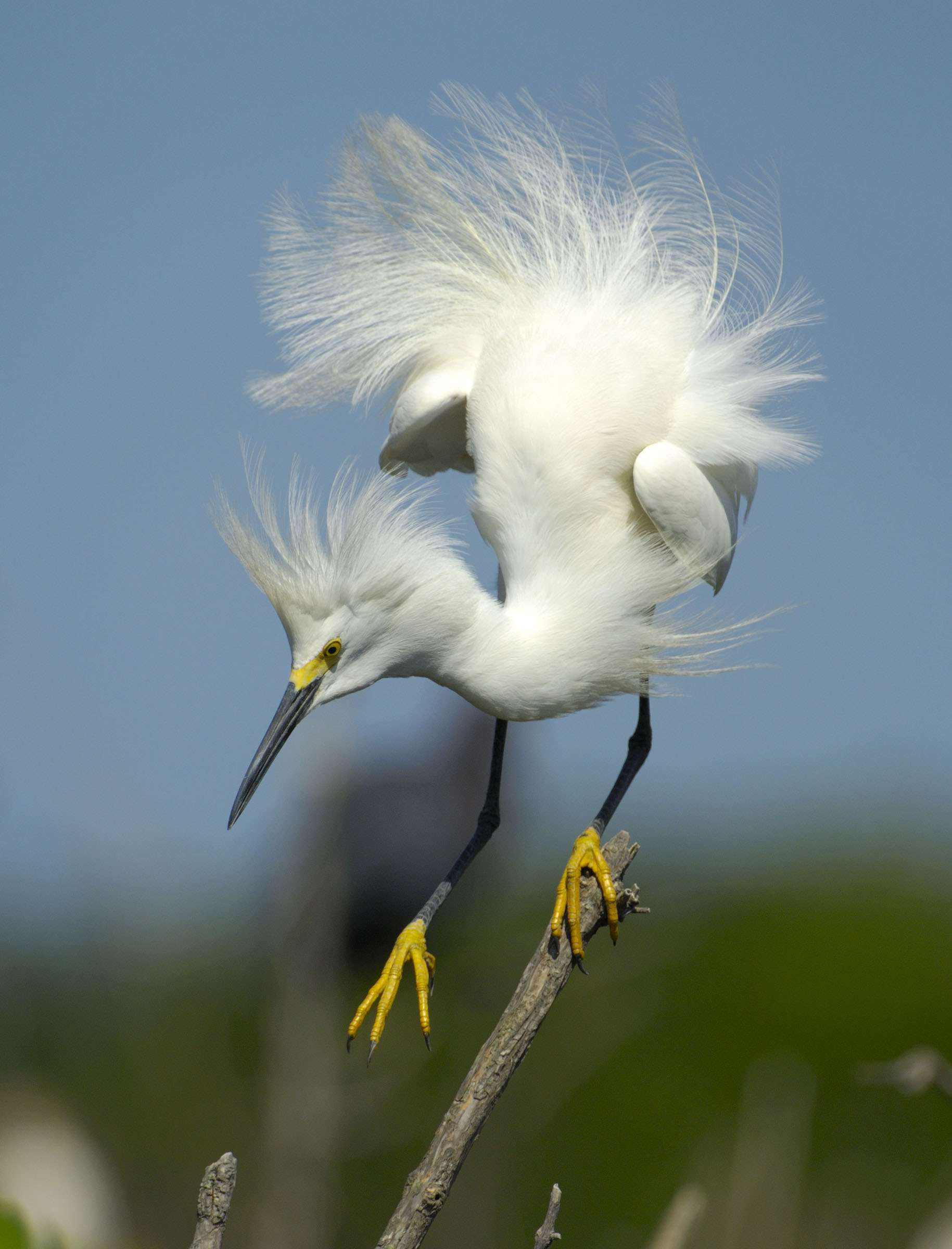 Snowy Egret by Bill Stripling, courtesy of the National Audubon Society
Snowy Egret by Bill Stripling, courtesy of the National Audubon Society
 Mottled Duck by Bill Stripling, courtesy of the National Audubon Society
Mottled Duck by Bill Stripling, courtesy of the National Audubon Society
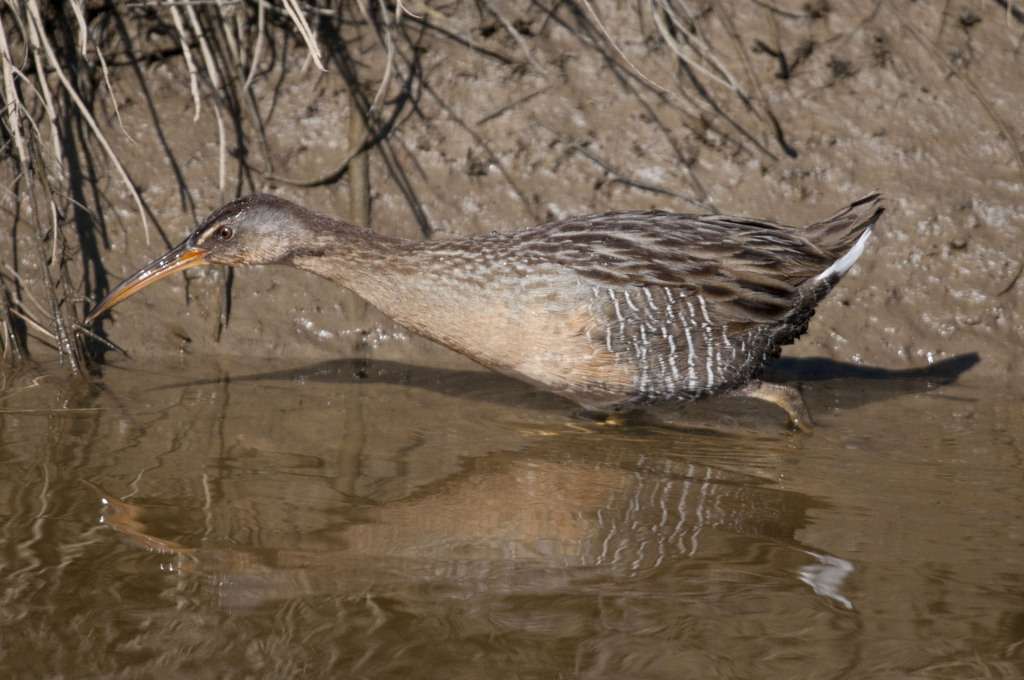 Clapper Rail by Bill Stripling, courtesy of the National Audubon Society
Clapper Rail by Bill Stripling, courtesy of the National Audubon Society
The longer oiled water persists, greater numbers of hatchlings and fledglings of the above species will be present and be particularly vulnerable.
Refuge staff have estimated more than 34,000 birds, including 2,000 pairs of pelicans, 5,000 pairs of royal terns, 5,000 pairs of caspian terns and 5,000 pairs of feeding, loafing and nesting gulls and other shore birds.
 American Oystercatcher by Bill Stripling, courtesy of the National Audubon Society
American Oystercatcher by Bill Stripling, courtesy of the National Audubon Society
The Mississippi's birdfoot delta, could also be the first affected area.
The wetlands of Delta National Wildlife Refuges are important nesting sites for mottled duck, and the shallow wetlands and mud flats are important feeding areas for large numbers of shore birds, wading birds and fisheries.
 Wilson's plover by Bill Stripling, courtesy of the National Audubon Society
Wilson's plover by Bill Stripling, courtesy of the National Audubon Society
All of the bird photographs are from the Breton national wildlife refuge, the second oldest wildlife refuge in America, established in 1904. They were made available for educational purposes (proper citation requested) by the National Audubon Society. The Breton wildlife refuge is but one of many potentially affected by the spill.
List of coastal wildlife potentially affected by the spill. (16pg PDF)


